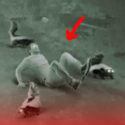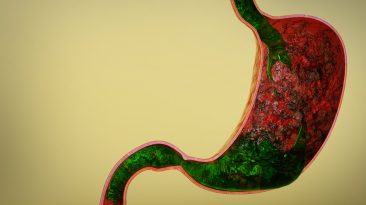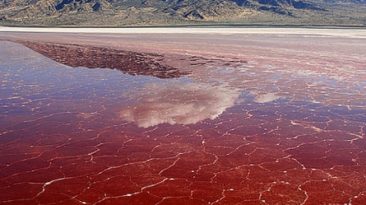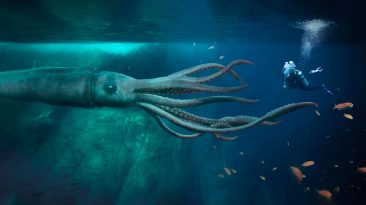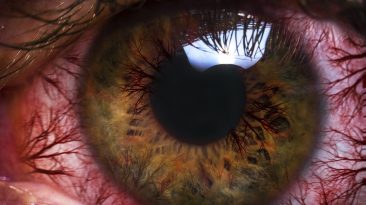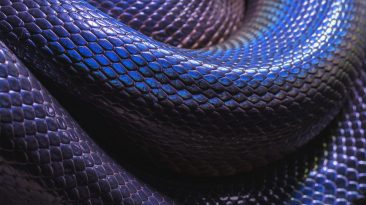It can swallow entire gazelles, turtles, and even lions. This is the Nile crocodile, the most dangerous crocodile in the world. It normally preys on after animals found in Africa. But now, it’s coming for you. How easy would it be for this crocodile to swallow you? What secrets lie in the crocodile’s stomach? And how would its heart help digest you?
If you think something like this is impossible, think again. Crocodile attacks are more common than shark attacks. And these attacks are responsible for nearly 1,000 fatalities a
year. So what would happen if you were one of these 1,000 attacks? Would you be able to survive?
First, let’s get to know a little bit more about this creature who’s coming after you. The Nile crocodile is typically found in Africa, but has also been seen in Florida as well. These crocodiles are incredibly aggressive, and are responsible for over 300 attacks on people every year. What might make it so aggressive is its size.
The Nile Crocodile can grow up 6 meters (20 ft) long and weigh up to 550 kg (1212 lb). All this combined makes it the most dangerous crocodile on Earth. And now, it’s coming to swallow you whole. You’d first get attacked by the crocodile somewhere along a river. And it’s likely this would happen between December and May, since that’s the crocodiles’ breeding season.
As you’re walking along the river, the crocodile would stalk you, waiting for the perfect opportunity to attack. You probably wouldn’t notice the croc. And even if you did, it might be hard to get away from it as the Nile croc can run up to 18 km/h (11mph) on land. And as it caught up to you, it would strike at your leg with its massive jaw, applying 3,500 kgs (5,000 lb) of pressure.
This would break your leg, preventing you from getting away. And now the crocodile could drag you into the river, where it likes to do the rest of it’s eating. Now that you’re in the water with the crocodile biting onto your leg, it would begin to roll you around the water. This is it attempting to disorient and drown you. And at this point, you’d be passed out.
And now that you’re not moving, the Nile croc would swallow your body whole. You would pass through the crocodile’s esophagus, and into its stomach. But wait, this is a lot of food. And not every animal would be able to eat something like this, so why can the crocodile?
Well, the crocodile’s stomach is unique. That’s because these creatures swallow rocks to help break up their food. And that’s why the crocodile didn’t need to chew you. While you’re inside the crocodile’s stomach, you’d be smushed through all these rocks. And with that, your body would be broken up into smaller chunks.
And that’s not the only thing that would help the croc digest you. Inside the crocodile’s body is a heart valve that they control with their nerves. Instead of this valve going to the crocodile’s lungs, it goes to the stomach. This allows the crocodile to produce 10x more gastric acid compared to other animals.
Over the course of a week, your body would be getting crushed up by all these rocks, and you’d be quickly dissolved by the stomach acid. Skin, bones, hair, and all. The crocodile would then poop out your remains, and go hunting for its next victim. So the next time you’re near a swampy river, watch out for crocodiles. If you’re not careful, they can be pretty dangerous.
But there are some things that you should be afraid of even more.
They’re the largest snakes on Earth, roaming the Amazon. They’ve eaten goats, deer and even crocodiles. So what would happen if an anaconda tried to eat you? Can an anaconda really swallow a human? How long would you be traveling through the snake’s body? And has something like this happened before?
Green anacondas grow up to 9 m in length (30 ft) and can weigh as much as 225 kg (500 lb). Believe it or not, in 2014 someone was actually dumb enough to attempt this. He was wearing a large, bulky suit covered in pig’s blood. The anaconda worked for an hour, wrapping it’s mouth around the head of the suit, but it was ultimately unsucessful in swallowing the human whole.
But if it had been successful, how would an anaconda be able to eat a full-sized adult? So you happen to be wandering in the Amazon rain forest and stumble upon one of these giant anacondas. You might think you’d be a tasty meal to them, as a small meal for an anaconda is about 18kg (40 lb). If they were to gobble you up, it would keep them satisfied for weeks! But a meal over 45 kg (100 lb) – like you – might not be what an anaconda is most interested in.
Due to how massive you are, not to mention being taller and broader than most animals it eats, you would take too long to consume. This would leave the anaconda vulnerable to predators for weeks, if not months until it finishes digesting you. But let’s say it did want to eat you. What would happen then?
Before an anaconda swallows you, it would kill you first. An anaconda is a constrictor snake, and kills by wrapping its body all around its prey and quickly crushing them to death with over 9,000 pounds of pressure.
It would be a pretty quick end for you, but we know that’s not how this show works. So, let’s assume you survive this, and we get to see the entire process. The anaconda would then widen its jaw to swallow you whole. You won’t have to worry about it chewing you up into little bits, since it only has fangs used for holding its prey. And luckily, as opposed to other snakes, the anaconda isn’t venomous, so its fangs won’t poison and the paralyze you. But something you will find in the anaconda’s mouth is lots and lots of saliva.
This will be used to moisten you, so it’s easier for the anaconda to slide you down their gullet. You’d then be moving down the snake’s esophagus. As happens in many other animals, the muscles in the esophagus will push you down the snake’s body. The anaconda also has the ability to move, and bend its ribs to crush you even further, and push you down to its stomach.
And now, you’re in the anaconda’s stomach. Don’t worry, we’re still keeping you alive to make this more fun. The anaconda’s stomach produces powerful acids and stomach enzymes that will dissolve your skin, and then, eventually, your bones. How fast do these acids work, exactly? Well, an anaconda once dissolved an alligator’s skin in just three days.
So your squishy and fleshy skin it would disappear pretty quickly. Your body would break down even further as you move through the snake’s small intestine. That’s due to the liver and pancreas secreting even stronger enzymes.
Everything besides your hair and your nails will be digested at this point. And even if you were wearing some magical suit that protected you from the acid and everything else, it would take you a couple of weeks before you were unceremoniously pooped out. So, its likely you’d starve.
Although something like this is incredibly unlikely, just leave anacondas alone. After all, they aren’t interested in eating you in most cases, as you’re just too big. They’re really just trying to defend themselves. Plus, you’d die pretty much instantly if you tried to mess with one of these things.
But don’t cheer up just yet. Because what would come after you next would not be spooked by your size. Oh, no, no, no.
Something is lurking in the water. Do you see it? Close calls like this happen with whales more often than you might expect. And although the people in these videos got away relatively unscathed, there’s no denying that they were just meters away from becoming a whale’s lunch. But what would happen if they hadn’t been so lucky? Could a human body survive being swallowed by a whale? Has it ever happened before?
If you’ve never seen a whale up close, it’s hard to comprehend just how monstrous they can really be. To put it in perspective, the blue whale is the largest animal on the planet! Its tongue alone weighs as much as an elephant, and it can fit anywhere between 400 and 500 people in its mouth.
But we wouldn’t have to worry about one of these guys swallowing us anytime soon, because their anatomy makes it nearly impossible. Instead, we should be more concerned with their smaller cousins, sperm whales. In 1891, reports emerged that a man had been swallowed by one of these whales, and although he lived to tell the tale, he would never be the same again…
According to the story, James Bartley was swallowed when a whale attacked his ship, and he wasn’t retrieved until the following day. When the crew found and killed the whale, they quickly brought it on board their ship and cut it open, revealing an unconscious but very alive James Bartley.
His face and arms were bleached white, and he was blind, all thanks to the stomach acids of the whale. However, as the years went by, people started poking holes in this story, and questioned whether James had really been swallowed by a whale. I mean, wouldn’t the stomach acids do more damage than just bleaching his skin?
Well, with the power of science, we took a closer look, and we quickly discovered that if you get swallowed by a whale, coming back out with shiny white skin would be the least of your worries.
Okay, so the first thing you’d have to worry about once you were swallowed would be getting shredded to pieces by the sperm whale’s impressive set of teeth. Each tooth is approximately 20 centimeters long, that’s about the length of an average chef knife, and whales have anywhere from 40 to 50 of these.
Let’s say you’re lucky enough to make it past all of them, next you’d begin your descent down the throat. Not only would it be dark and slimy down here, but you’d also find it hard to breathe due to the lack of oxygen and an increase in methane gas.
As the whale’s throat muscles constricted in and out to help force you down, you’d also start to feel hydrochloric acid beginning to eat away at your skin. I know what you’re thinking, we just got into this whale, and James Bartley’s story already seems pretty fishy. Well, you’re not wrong, but where would be the fun in stopping now???
So, next you’d be dropped into the first, and largest, of the whale’s four stomachs. You’d probably be in there for a while, but the bright side is you might have some light in the form of a bioluminescent squid or two being noshed on after your arrival (sperm whales love the neon flying squid).
You’d better enjoy this brief light show, because after this you’d just be tossed from one stomach to the next, with the acids breaking down almost all of your body until you’re just a bunch of bones being unceremoniously ejected from the whale’s anus.
So yeah, it’s pretty safe to say that there’s no way you could be swallowed whole by a whale and live to tell the tale. Sorry, James. You may have been able to fool people in the 1890s, but we’re on to you now. For as vast as they are and as monstrous as they might seem to us, whales actually have no interest in eating humans. And if they could talk, they would probably make a point of telling us that.









